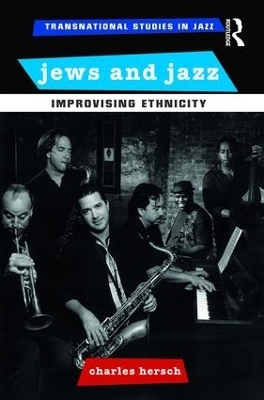
Jews and Jazz
Improvising Ethnicity
Seiten
2016
Routledge (Verlag)
978-1-138-19579-0 (ISBN)
Routledge (Verlag)
978-1-138-19579-0 (ISBN)
Jews and Jazz: Improvising Ethnicity explores the meaning of Jewish involvement in the world of American jazz. It focuses on the ways prominent jazz musicians like Stan Getz, Benny Goodman, Artie Shaw, Lee Konitz, Dave Liebman, Michael Brecker, and Red Rodney have engaged with jazz in order to explore and construct ethnic identities.
The author looks at Jewish identity through jazz in the context of the surrounding American culture, believing that American Jews have used jazz to construct three kinds of identities: to become more American, to emphasize their minority outsider status, and to become more Jewish. From the beginning, Jewish musicians have used jazz for all three of these purposes, but the emphasis has shifted over time. In the 1920s and 1930s, when Jews were seen as foreign, Jews used jazz to make a more inclusive America, for themselves and for blacks, establishing their American identity. Beginning in the 1940s, as Jews became more accepted into the mainstream, they used jazz to "re-minoritize" and avoid over-assimilation through identification with African Americans. Finally, starting in the 1960s as ethnic assertion became more predominant in America, Jews have used jazz to explore and advance their identities as Jews in a multicultural society.
The author looks at Jewish identity through jazz in the context of the surrounding American culture, believing that American Jews have used jazz to construct three kinds of identities: to become more American, to emphasize their minority outsider status, and to become more Jewish. From the beginning, Jewish musicians have used jazz for all three of these purposes, but the emphasis has shifted over time. In the 1920s and 1930s, when Jews were seen as foreign, Jews used jazz to make a more inclusive America, for themselves and for blacks, establishing their American identity. Beginning in the 1940s, as Jews became more accepted into the mainstream, they used jazz to "re-minoritize" and avoid over-assimilation through identification with African Americans. Finally, starting in the 1960s as ethnic assertion became more predominant in America, Jews have used jazz to explore and advance their identities as Jews in a multicultural society.
Charles Hersch is Professor of Political Science at Cleveland State University. He is also the author of Democratic Artworks: Politics and the Arts from Trilling to Dylan and Subversive Sounds: Race and the Birth of Jazz in New Orleans.
Part 1: Becoming American
1. Jewish Tin Pan Alley Composers and Musical Pluralism
2. Black-Jewish Integration in the Jazz World from the Swing Era to the 1950s
3. "Listening for the Black Sound": Jews in the Jazz Music Business
Part 2: Becoming Black
4. "Every Time I Try to Play Black, It Comes Out Jewish": Jewish Jazz Musicians Cross the Color Line
5. "Matzo Balls-Ereenie": African American Jazz Versions of Jewish Songs
Part 3: Becoming Jewish
6. Swinging Hava Nagila: "Jewish Jazz" and Jewish Identity
| Erscheinungsdatum | 17.12.2016 |
|---|---|
| Reihe/Serie | Transnational Studies in Jazz |
| Verlagsort | London |
| Sprache | englisch |
| Maße | 152 x 229 mm |
| Gewicht | 294 g |
| Themenwelt | Kunst / Musik / Theater ► Musik ► Jazz / Blues |
| Kunst / Musik / Theater ► Musik ► Pop / Rock | |
| Sozialwissenschaften ► Soziologie ► Spezielle Soziologien | |
| ISBN-10 | 1-138-19579-0 / 1138195790 |
| ISBN-13 | 978-1-138-19579-0 / 9781138195790 |
| Zustand | Neuware |
| Haben Sie eine Frage zum Produkt? |
Mehr entdecken
aus dem Bereich
aus dem Bereich
zur politischen Ästhetik des Jazz
Buch | Hardcover (2023)
Phillip Reclam (Verlag)
CHF 49,90
Die Geschichte des Jazz in Deutschland
Buch | Softcover (2021)
Reclam, Philipp (Verlag)
CHF 31,90


